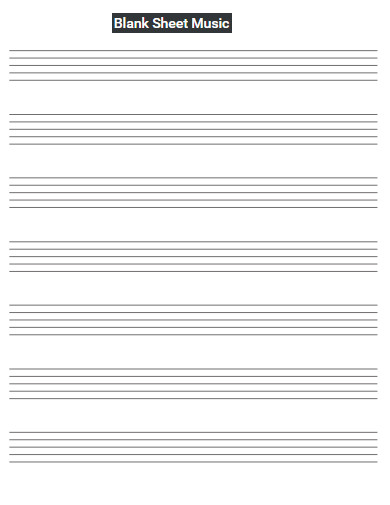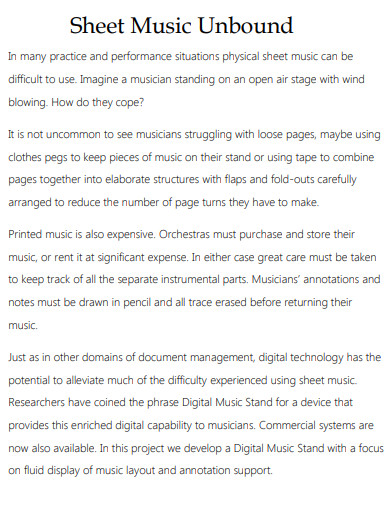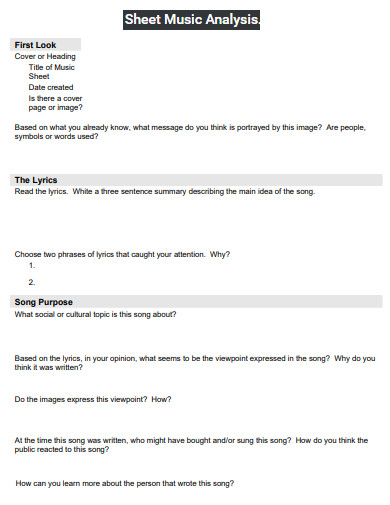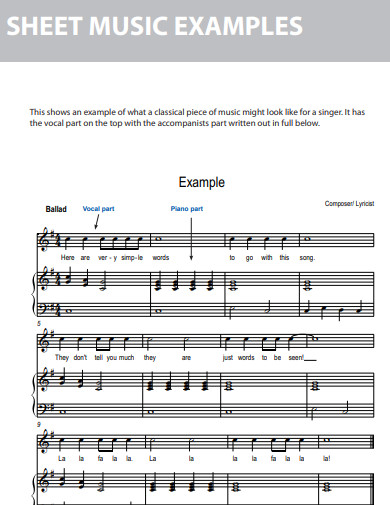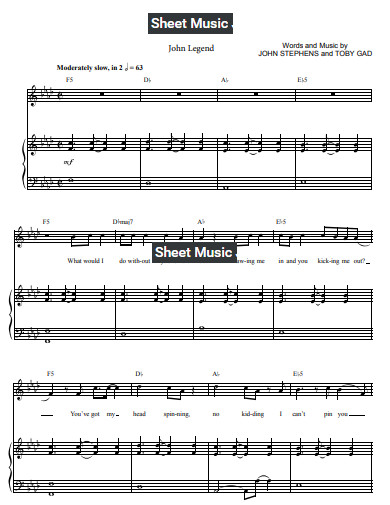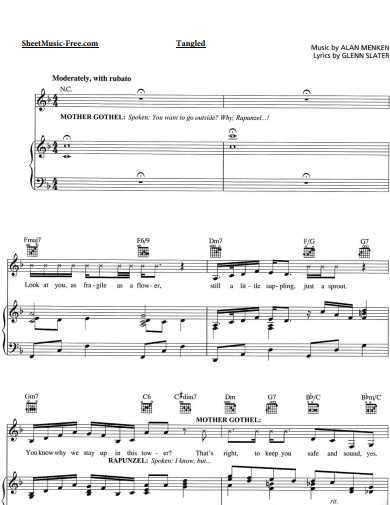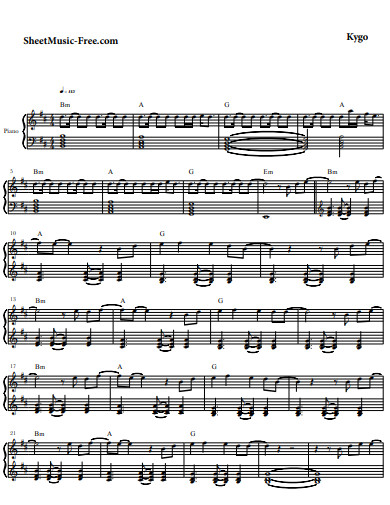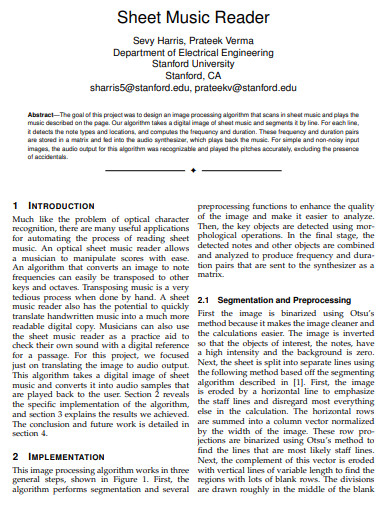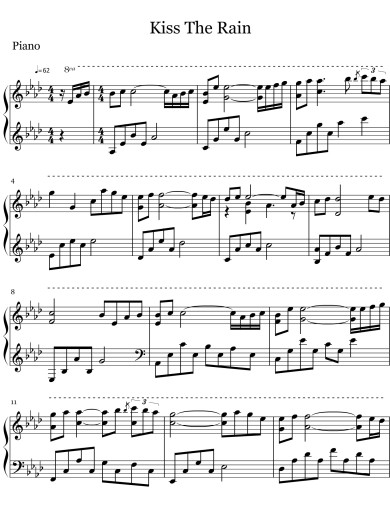For those who are not trained in music, reading a music sheet will definitely feel like you’ve been reading a book written in a foreign language with no translation aid. In fact, it is said that beginners would take about one or two years to completely grasp the basic ability to read music sheets. But, if you think that reading sheet music is challenging, what more when you are tasked to create one? In this article, we will provide you with information about music sheets and how to create a detailed one that you can use as music lesson plans, or for orchestra concert programs, artist exhibitions, musical art events, solo performances, and class presentations.
10+ Music Sheet Samples
1. Blank Sheet Music
2. Sheet Music Unbound
3. Sheet Music Analysis
4. Sheet Music Example
5. Sample Sheet Music
6. Sheet Music Collection
7. Basic Sheet Music
8. Best Sheet Music
9. Editable Sheet Music
10. Sheet Music Reader
11. Piano Sheet Music
What Is a Music Sheet?
A music sheet, more popularly known in the music industry as a score, is a transcribed or printed piece of paper indicating a song’s note, rhythm, or pitches. The origin of the music sheet can be traced all the way back to 2000 BC in old Iraq (formerly called Sumer). Scores have various types of formats, such as the full score which is used by opera conductors and music composers, the miniature score which is meant for practice use, the piano score, the vocal score, and the short score, among others. There are also other music sheets that are now commonly used in the modern music scene such as the chord charts and fingering charts made for vocals, guitars, saxophone, and other musical instruments.
How to Create a Music Sheet?
Creating a musical score can be a taxing task, especially if you are not sure for whom and for what instrument you are making it. Prepare a sample draft of your musical sheet and follow the suggestions below to start composing your score.
1. Know the Purpose of Your Score
Drawing a score is easy, but that’s not to say when you are composing for a certain performer or an ensemble. That is why it is vitally important that you know the very purpose of your music sheet. If you are doing it for yourself, then you may need to consider what type of score you want to create, what musical instrument would you be playing, and whether you want to make a full score or a short one. With these ideas in mind, it would be easier for you to start somewhere without worries.
2. Use Reference Materials as a Sample
Whether you are a first-timer creating a basic music sheet or a veteran trying to compose your own music, it is still recommended that you look at reference materials as a guide. The thing about making a sheet is that you should know where your annotations go, how you build your rhythm, what descriptors you should write on your notation, how you start your tempo, and so forth. With an accurate guide, you can definitely create your sheet in no time, plus you will be able to increase your learning.
3. Provide Score Information
Another thing that your music sheet should include is information about you and the piece you are making. You can either create a front page for that or put it above the music sheet. Put your complete name as the composer, the name of the piece, the name of the instrument the composition was made for, the date when you have written the piece, copyright license notification (if available), and even an introduction to the piece.
4. Design the Sheet Professionally
If reading a prewritten score sheet is giving you a hard time reading through it, then the harder it would be if not designed properly. When writing down the notes, make sure that they are properly placed to match the beat you want to highlight in your sheet as well. Be careful with the spacing, and do not make it look like the musical notes and rests are cramped together. Furthermore, give enough space for descriptors so that it can still be read by you or other music players.
What is the most complicated music sheet to read?
The music with one of the most difficult music sheets to read would be Liszt’s La Campanella. It has a brisk tempo with tremendous right-hand jumps that would surely challenge any pianist. Liszt also created many pieces with complicated and hard etudes which people had a difficult time learning.
What instruments have the most pieces of music sheet ever written?
The piano would be the only instrument that has more than a thousand music sheets ever written worldwide. Next to it would be the stringed instruments violin and cello, with the flute coming in third or fourth place.
Who made the oldest piece of music sheet in the world?
The oldest piece of music sheet that ever existed was the Sonata de cimbalo di piano e forte by Lodovico Giustini which was composed during the 17th century.
Creating the best music sheet to compose your masterpieces takes a long time of practice, dedication, and focus on the craft. Begin your journey in the world of music composition and score reading with our handy and preformatted music sheet templates that you can check out from our gallery.
Related Posts
FREE 10+ Music Contract Samples & Templates in PDF MS Word ...
FREE 8+ Music Student Progress Report Samples in PDF DOC
FREE 11+ Music Marketing Plan Templates in PDF MS Word
FREE 10+ Guitar Chords Chart Samples in PDF Google Sheets
FREE 10+ Music Band Contract Templates in PDF MS Word
FREE 10+ Press Release Fact Sheet Samples in PDF DOC
FREE 8+ Sample Video Storyboard Templates in PDF MS Word
FREE 7+ Line Sheet Templates in PDF
How to Create a Music Business Proposal [7+ Samples]
FREE 7+ Sample Audition Forms in PDF MS Word
FREE 53+ Information Sheet Examples in MS Word Pages
FREE 7+ Booking Agent Contract Templates in PDF MS Word ...
FREE 10+ Copyright Disclaimer Statement Samples in PDF DOC
FREE 8+ Sample Cornell Note Templates in PDF
FREE 19+ Sample Lined Paper Templates in PDF MS Word

